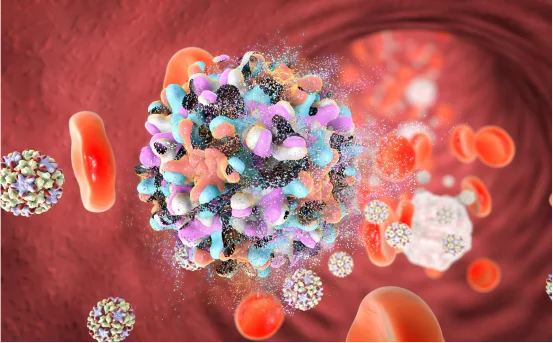Childbirth is a miraculous event, but it doesn’t always go according to plan. In certain situations, when a vaginal delivery becomes challenging during the final stage of labor, doctors may recommend an assisted delivery method known as vacuum vaginal delivery. This procedure, also called vacuum-assisted vaginal delivery, is a valuable tool used by obstetricians to safely guide the baby out of the birth canal using a specialized suction device.
Understanding this method, when it is used, how it is performed, and what risks or benefits it carries can help expecting mothers and their families feel more confident and prepared during labor and delivery.
Understanding What is Vacuum Vaginal Delivery Surgery?
Vacuum vaginal delivery is a type of assisted vaginal birth. It involves the use of a vacuum device with a soft or rigid cup that is gently attached to the baby’s head. This suction cup is connected to a pump that creates negative pressure (vacuum), helping guide the baby out during contractions while the mother pushes.
This technique is typically employed during the second stage of labor when the cervix is fully dilated, but the baby is not progressing down the birth canal despite strong maternal effort. It serves as a safer alternative to emergency cesarean delivery in specific circumstances and is generally considered less invasive.
When is Vacuum Vaginal Delivery Needed?
Vacuum-assisted delivery is not performed routinely. It is only recommended when medically necessary. Here are common indications for choosing vacuum vaginal delivery:
- Prolonged second stage of labor :- If labor stalls and the baby isn’t progressing despite strong pushing efforts for over two hours (or one hour in some cases), assistance may be needed.
- Maternal exhaustion :- Labor can be physically draining. If the mother is too tired to continue pushing effectively, vacuum assistance can help.
- Non-reassuring fetal heart rate :- If the baby shows signs of distress, such as an abnormal heart rate, a vacuum-assisted delivery may be used to speed up birth.
- Certain medical conditions :- For mothers with heart conditions, high blood pressure, or neurological issues, shortening the second stage of labor may be critical for health.
It is important to note that vacuum delivery is only an option if the baby is in the proper position (head-down), the cervix is fully dilated, the membranes have ruptured, and the baby’s head is low in the birth canal.
How is the Procedure Performed?
Vacuum vaginal delivery is performed by a trained obstetrician in a hospital setting. The procedure is typically done quickly and with careful monitoring. Here’s a step-by-step overview:
- Preparation :- The mother is placed in a suitable birthing position, usually lying on her back with knees bent. A local anesthetic or epidural may be given if not already in place.
- Placement of Vacuum Cup :- The doctor gently inserts the vacuum cup into the birth canal and positions it on the baby’s head, ensuring correct placement to avoid injury.
- Creating Suction :- Once the cup is in place, suction is gradually applied to create a seal. This allows the cup to adhere to the baby’s scalp.
- Assisted Delivery :- During contractions, the mother is encouraged to push while the doctor gently pulls using the vacuum. This combined effort helps guide the baby out of the birth canal.
- Removal of the Cup :- Once the baby’s head is delivered, the suction is released, and the cup is removed. The rest of the baby’s body is delivered normally.
- Post-Delivery Evaluation :- The baby is examined for any signs of bruising or swelling, and the mother is assessed for potential injuries or tears.
Benefits of Vacuum Vaginal Delivery
When performed appropriately, vacuum-assisted delivery offers several advantages over emergency cesarean or prolonged natural labor:
- Avoids major surgery :- Unlike a C-section, vacuum delivery allows the mother to give birth vaginally, which typically results in a quicker recovery.
- Reduces labor stress :- For both the mother and the baby, shortening the second stage of labor can reduce physical stress and risks.
- Faster delivery :- In emergencies, vacuum extraction allows for faster delivery compared to preparing for surgical intervention.
- Minimal invasiveness :- Compared to forceps delivery, vacuum extraction is often gentler and associated with fewer maternal injuries.
Potential Risks and Complications
While vacuum vaginal delivery is generally safe, it does carry some risks both for the baby and the mother. These risks are rare and usually mild, but it’s important to be aware:
For the Baby:
- Scalp swelling (caput succedaneum) :- A soft swelling may appear on the baby’s head where the cup was applied. It usually disappears within a few days.
- Bruising or minor lacerations :- Slight bruises are common but usually harmless.
- Cephalohematoma :- A buildup of blood between the skull and scalp, which typically resolves without intervention.
- Rare neurological injury :- Very rarely, there may be a risk of bleeding inside the skull, which is why proper technique and case selection are essential.
For the Mother:
- Perineal tears or episiotomy :- Some women may experience tearing that may require suturing.
- Vaginal or cervical lacerations :- Minor injuries may occur during the procedure.
- Postpartum discomfort :- Pain or soreness in the perineal region may last a few days after delivery.
Despite these potential complications, vacuum-assisted delivery remains a safe and effective option when performed by skilled professionals under the right conditions.
Recovery and Aftercare
Recovery from vacuum vaginal delivery is generally quick and similar to that of a normal vaginal birth. However, both the mother and baby may need short-term observation for any signs of complications.
- For mothers, managing perineal pain with ice packs, pain relief medications, and warm baths can be helpful.
- For babies, any scalp swelling or bruising should be monitored, but usually resolves naturally.
Healthcare providers will give clear instructions about what to watch for and when to seek help post-delivery.
Conclusion
Vacuum vaginal delivery surgery is a medically sound and often necessary intervention used during challenging vaginal births. When used appropriately, it provides a safe alternative to cesarean delivery, helping mothers deliver their babies with minimal delay and stress. While no method is without risks, advances in obstetric care and the expertise of skilled practitioners have made vacuum-assisted delivery a reliable option in modern labor and delivery.
Expecting mothers should feel empowered to discuss all birthing options with their healthcare provider well in advance. Understanding the process, potential risks, and benefits helps families make informed decisions and approach childbirth with confidence and clarity.























